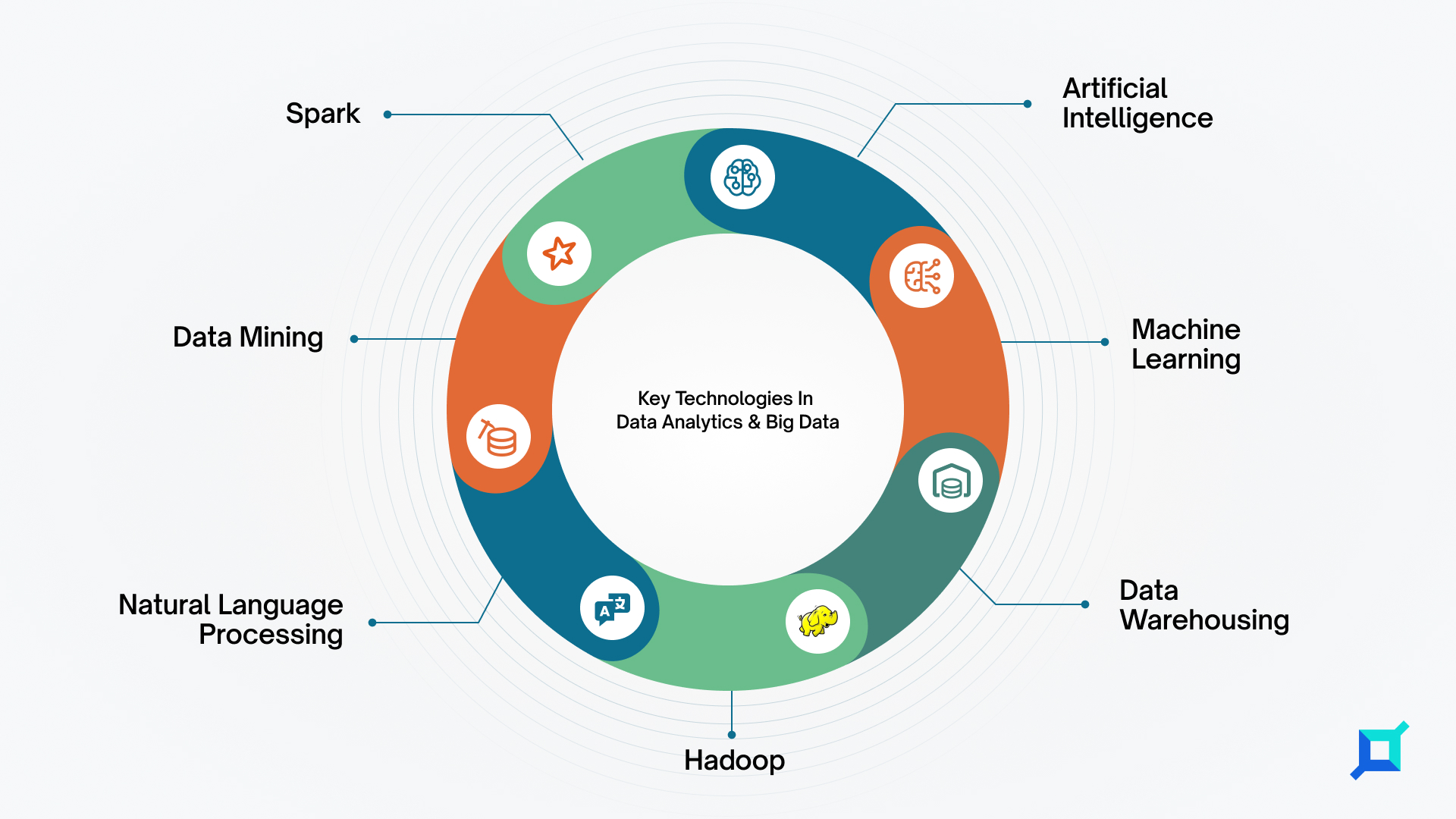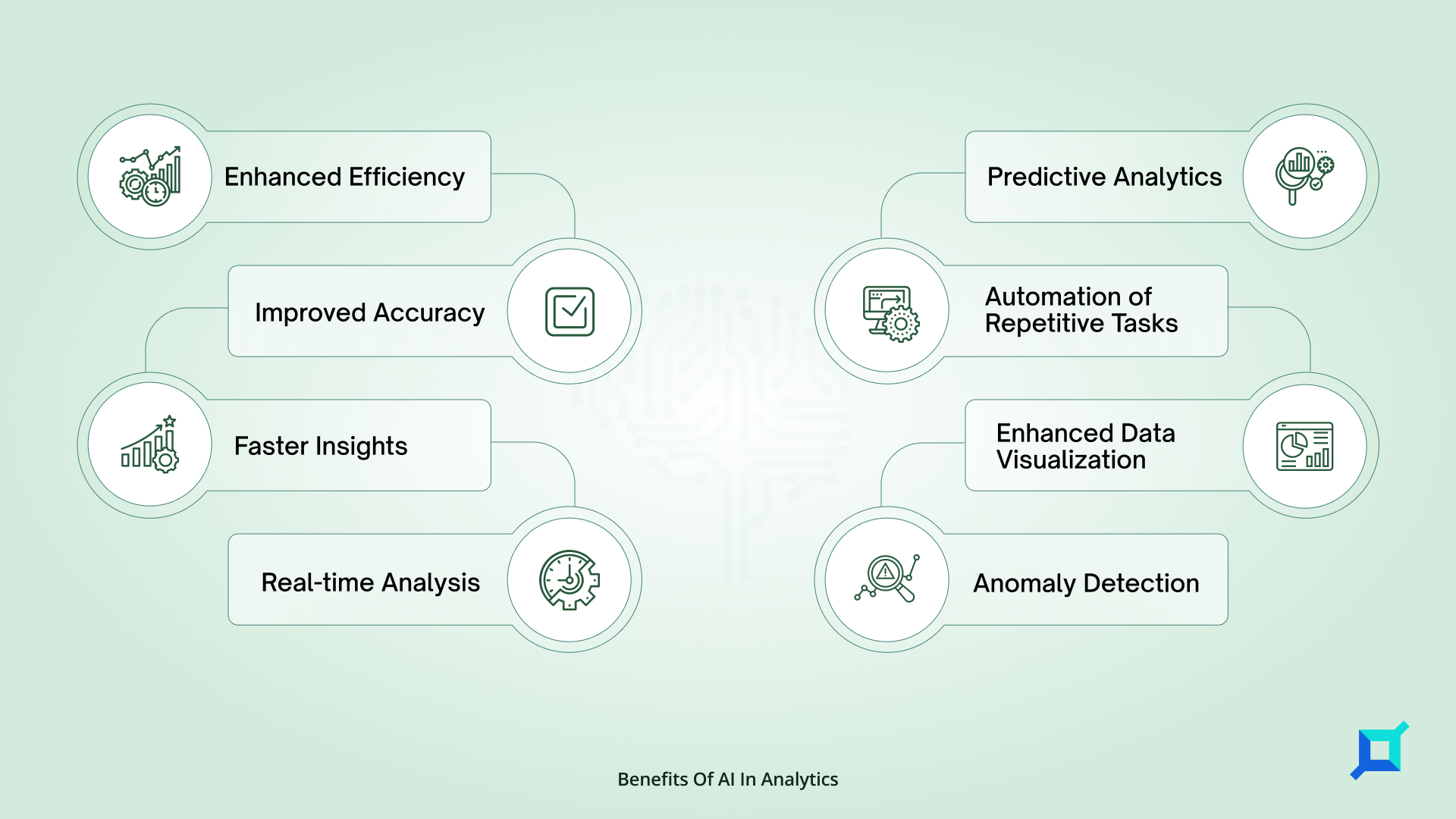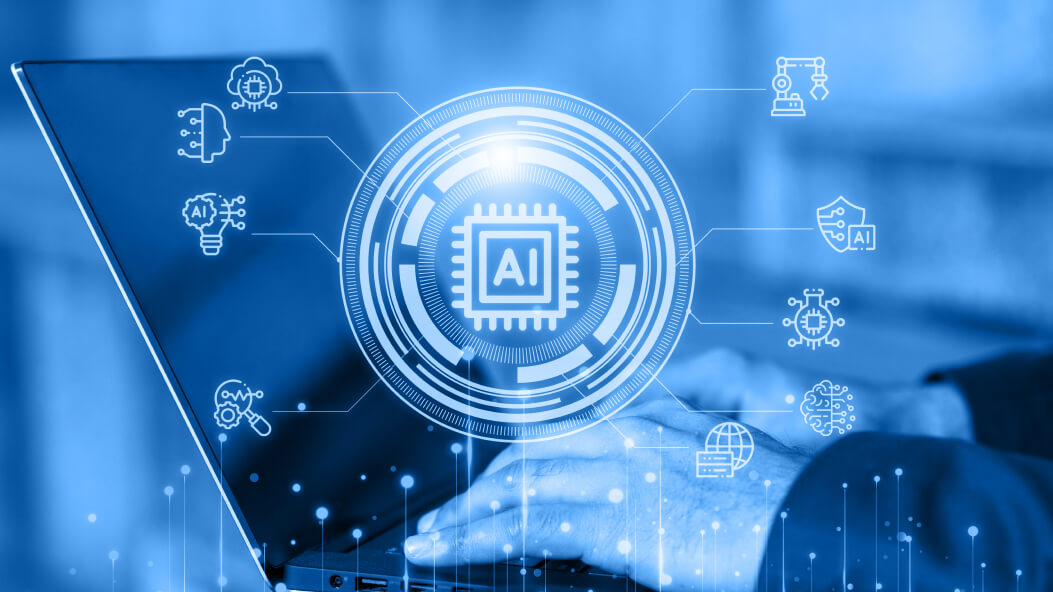In today’s digital age, the world generates an astonishing amount of data that continues to grow at an unprecedented rate. In fact, as of 2023, it’s estimated that we create 2.5 quintillion bytes of data daily, which is only expected to surge in the coming years. This data deluge presents both a challenge and an opportunity. How can we make sense of this vast sea of information and extract valuable insights that drive smarter decision-making?
Data analytics is the key to unlocking the hidden potential within this data tsunami. It aims to harness the power of information, transforming raw data into actionable insights that fuel decision-making and enhance business performance. However, navigating this sea of data is a challenging feat. It requires meticulous collection, processing, and analysis of data, a task for which human efforts can sometimes fall short, leading to inefficiencies or inaccuracies.
That’s where the dynamic duo of Artificial Intelligence (AI) and Machine Learning (ML) steps in. AI analytics mirrors human cognition, deep dips into data, automates complex workflows and delivers lightning-fast, accurate insights. It’s like having an army of data scientists working around the clock. For instance, AI powers the personalized product recommendations you see while shopping online, thanks to its ability to understand user preferences.
Moreover, AI conquers the once-insurmountable challenge of ‘Big Data,’ allowing businesses to mine valuable insights that drive marketing strategies and shape future directions. This article explores how AI revolutionizes data analytics, streamlines workflows, and predicts market trends and its benefits. Join us on a journey into a future where decisions are not just data-driven but AI-empowered, where the possibilities are endless.
Jump to section
What Is Data Analytics?
It is the procedure of examining, cleaning, altering, and interpreting data to discover meaningful insights, patterns, and trends. It uses various techniques, tools, and technologies to extract valuable information from structured or unstructured data. The primary goal of data analytics is to support decision-making and improve business performance by providing data-driven insights.
Data analytics can be categorized into several types based on the nature of the analysis and the insights they provide. Here are the major types of data analytics:
Descriptive Analytics
This type focuses on summarizing historical data to provide a clear picture of past events and trends. Descriptive analytics answers the question, “What happened?” It includes basic statistical methods, data visualization, and reporting. For example, generating monthly sales reports to understand revenue trends.
Diagnostic Analytics
It goes a step further by examining data to understand why certain events or trends occurred. It aims to determine the root causes of past outcomes and answer the question, “Why did it happen?” This type often involves advanced data mining techniques and statistical analysis.
Predictive Analytics
This analytics involves using historical data and statistical algorithms to make projections about future events or trends. It answers the question, “What is likely to happen?” Machine learning and data modeling play a significant role in predictive analytics, enabling businesses to forecast sales, demand, and customer behavior, among other things.
Prescriptive Analytics
It takes predictive analytics further by not only predicting future outcomes but also providing recommendations on how to optimize those outcomes. It answers the question, “What should we do about it?” This type of analytics is particularly valuable in decision optimization, resource allocation, and risk management.
These types of data analytics play a crucial role in various industries and are essential for organizations seeking to leverage data-driven decision-making. The choice of the right type of analytics depends on the specific goals and challenges faced by an organization. To augment their potential and cater to a spectrum of business requirements, a plethora of technologies can be seamlessly integrated with data analytics and big data, enabling more informed decision-making processes.
Key Technologies In Data Analytics & Big Data

Why Use Artificial Intelligence (AI) In Data Analytics?
Using AI for data analytics offers numerous compelling advantages. AI brings advanced capabilities to the table that significantly enhance the effectiveness and efficiency of data analysis processes.
First and foremost, AI excels in handling the vast volume of data that characterizes the modern world. With data growing at an unprecedented rate, AI’s ability to process and analyze large datasets at lightning speed is invaluable. This not only accelerates the decision-making process but also enables the discovery of insights that might remain hidden in a sea of information.
AI’s capacity for pattern recognition is another game-changer. It can identify complex and subtle patterns within data that might elude human analysts. Whether it’s detecting fraud in financial transactions, pinpointing anomalies in manufacturing processes, or recognizing customer behavior trends, AI’s pattern recognition capabilities add a layer of precision to data analytics.
Moreover, AI systems continuously learn and adapt, a trait that’s particularly beneficial in a world where data is constantly evolving. Machine learning algorithms can automatically improve their performance over time, becoming more accurate and efficient with each iteration. This adaptability is crucial for staying ahead in dynamic industries.
AI-driven predictive analytics is yet another compelling reason to embrace this technology. By analyzing historical data, AI can forecast future trends and outcomes, enabling proactive decision-making. Whether it’s predicting consumer preferences, optimizing supply chains, or anticipating equipment failures, AI can empower businesses to make smarter choices and gain a competitive edge.
Furthermore, AI augments human decision-makers by providing data-driven insights and recommendations. It doesn’t replace human analysts but rather works in tandem with them. This collaborative approach combines human expertise with AI’s computational power to produce more informed and precise decisions.
In summary, AI in data analytics enhances decision-making by handling big data, recognizing patterns, and predicting trends, amplifying the impact of data-driven decisions.
How AI In Data Analytics Is Employed?
AI in data analytics is used in various ways to extract valuable insights from data and improve decision-making processes across different industries. Here are some key applications of AI in data analytics:
Predictive Analytics: AI algorithms analyze historical data to make predictions about future events or trends. This is used in areas like financial forecasting, demand prediction, and risk assessment.
Natural Language Processing (NLP): AI-driven NLP is employed to analyze and understand human language data, including text and speech. It’s used in sentiment analysis, chatbots, and language translation.
Recommendation Systems: AI algorithms, such as collaborative filtering, are used to provide personalized recommendations to users. This is widely seen in e-commerce platforms and streaming services.
Anomaly Detection: AI can identify unusual patterns or outliers in data, which is crucial for fraud detection, cybersecurity, and quality control in manufacturing.
Image and Video Analysis: AI-powered computer vision is used to analyze images & videos, enabling applications like facial recognition, object detection, and medical image analysis.
Customer Insights: AI helps businesses gain a deeper understanding of customer behavior and preferences, allowing for targeted marketing campaigns and product recommendations.
How AI & ML Can Enhance Your Data Analytics Workflow: A Step-By-Step Guide
In our data-driven world, optimizing data analytics workflows stands as a critical imperative. Here’s how the integration of AI and ML can revolutionize this process, imbuing it with greater efficiency and precision:
Preparation Of Data
- Automated Data Cleansing: Traditional data preparation can be laborious. AI and ML algorithms excel in spotting and rectifying errors within datasets, assuring data quality.
- Seamless Data Integration: ML, through pattern recognition, can automate the amalgamation of data from diverse sources, saving time and ensuring uniformity.
- Handling Missing Values: AI can predict and fill in missing data points based on existing patterns, eliminating the need for manual imputation.
- Normalization and Standardization: AI tools can swiftly identify which data requires normalization or standardization, rendering datasets more comparable and suitable for analysis.
Exploration Of Data
- Enhanced Visualizations: AI can assist in crafting interactive dashboards that adapt to user queries, offering dynamic insights.
- Pattern Discovery: Leveraging ML, extensive datasets can be meticulously combed through, unveiling concealed patterns and insights that human analysts might overlook.
- Feature Selection and Engineering: ML can rank and transform the most pertinent features for analytical models, augmenting their performance.
Data Modeling
- Model Selection: AI can automate the selection of the most suitable modeling technique based on data characteristics and problem requirements.
- Hyperparameter Optimization: Instead of manual trial and error, ML algorithms can autonomously fine-tune parameters, enhancing model accuracy.
- Real-time Evaluation: AI tools can furnish real-time feedback on model performance, facilitating swift iterations and enhancements.
Data Communication
- Natural Language Generation: AI can automatically translate intricate data outcomes into lucid, natural language narratives, simplifying interpretation.
- Translation and Multilingual Support: AI-driven tools can swiftly convert findings into multiple languages, expanding their reach.
- Voice-Enabled Reporting: AI-driven speech synthesis can enable stakeholders to “listen” to insights, enhancing accessibility.
Security Of Data
- Predictive Threat Analytics: ML models can predict potential security threats by analyzing patterns and fortifying defenses.
- Encryption and Authentication: AI can be employed to develop more sophisticated encryption methods and ensure data access only by authenticated users.
- Real-time Anomaly Detection: By incessantly monitoring data traffic, AI can promptly detect and notify of any suspicious activities, ensuring immediate response.
Innovation Of Data
- Generative Models: ML models, especially Generative Adversarial Networks (GANs), can craft synthetic datasets, which are invaluable in scenarios with limited real data.
- Personalization: ML-driven recommender systems can furnish users with highly tailored products or content suggestions based on past behavior and preferences.
- Advanced Visual Recognition: Advanced ML models can discern not only objects but also emotions, activities, and more, ushering in profound insights and inventive applications.
The infusion of AI and ML into the data analytics workflow begets quicker, more precise insights, revolutionizing how businesses apprehend and harness their data.
Benefits Of AI In Analytics

Conclusion
The integration of AI into data analytics has ushered in a new era of data-driven decision-making. The benefits are substantial, ranging from enhanced efficiency and accuracy to real-time insights and predictive analytics. AI’s ability to automate tasks, recognize patterns, and handle big data has revolutionized how businesses and industries harness the power of their data.
As AI technologies continue to grow, we can anticipate even more innovative applications and transformative impacts across various sectors. Embracing AI in data analytics isn’t just an option; it’s a necessity for staying competitive and unlocking the full potential of the data-driven future.
Moreover, if you are looking forward to introducing AI to make effective business-centric decisions, connect with Infrablok experts.




